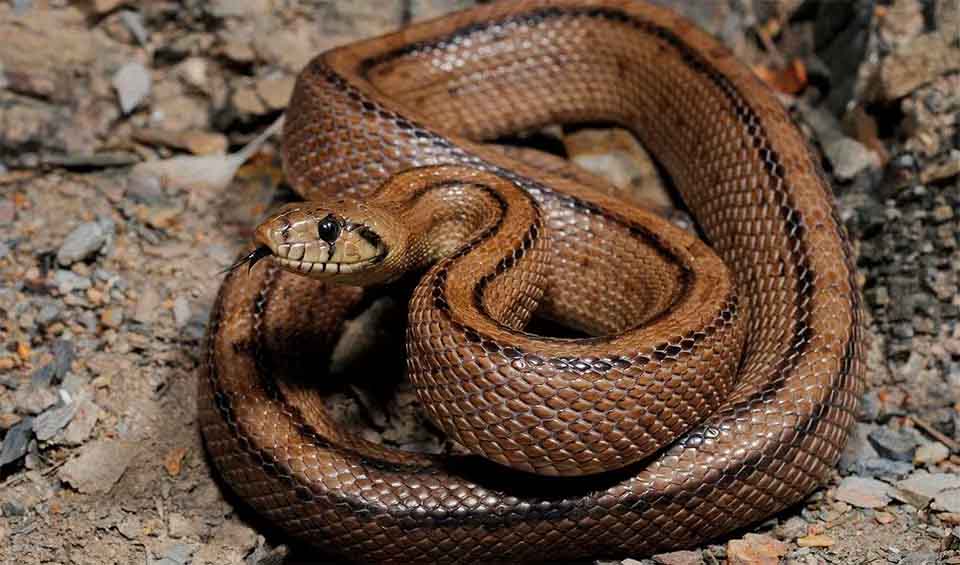A captivating species native to southwestern Europe, particularly thriving in countries like Spain, Portugal, and parts of France. Named for the distinct ladder-like pattern on its back during its juvenile stage, this snake presents a series of darker crossbands on a lighter background, which gradually changes as it matures; adults often lose this ladder pattern and develop a more uniform coloration, typically shades of brown or olive.
The ladder snake is known for its slender build and relatively large eyes, which provide excellent vision. This snake is non-venomous, relying on constriction to subdue its prey. It primarily feeds on small mammals, especially rodents, but its diet can also include birds, lizards, and occasionally eggs. This varied diet helps control the population of these smaller animals, proving the Ladder snake to be a crucial component of its ecosystem by maintaining a natural balance.
One of the ladder snake’s interesting behaviors is its adaptability to various habitats. It is found in a range of environments, from dry, rocky areas to open woodlands and even semi-urban areas, where it often hunts around human dwellings for rodents. This adaptability makes the Ladder snake quite resilient; however, it still faces threats from habitat destruction and roadkill.
When threatened, they may hiss loudly and adopt a striking pose, but they rarely bite. Instead, they might release a foul-smelling musk from glands near their tail to deter predators. This non-aggressive nature makes them less of a threat to humans and more of an interesting species to observe in the wild.
Distribution
 France
France Italy
Italy Portugal
Portugal Spain
SpainAnything we've missed?
Help us improve this page by suggesting edits. Glory never dies!
Suggest an editGet to know me
Terrestrial / Aquatic
Altricial / Precocial
Polygamous / Monogamous
Dimorphic (size) / Monomorphic
Active: Diurnal / Nocturnal
Social behavior: Solitary / Pack / Herd
Diet: Carnivore / Herbivore / Omnivore / Piscivorous / Insectivore
Migratory: Yes / No
Domesticated: Yes / No
Dangerous: Yes / No




